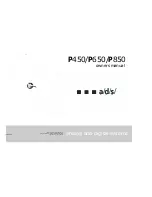
15
TAD-CR1TX
English
Improving Bass Performance
Select a music track with well-recorded bass, such as acoustic
string bass. Listen for all the bass notes having roughly equal
level. If any notes jump out at you more strongly than others, try
moving the TAD Compact Reference speaker system until you get
the most even progression of the notes.
Typically, moving them towards the walls will increase low
bass output, but can result in more unevenness higher up the
musical scale. Moving them closer to the side walls will not
produce the same effect as moving closer to the back wall, so try
experimenting moving both ways for the most pleasing sound.
Also listen to drum sounds. The kick drum should sound tight and
fast, without low-frequency boom. Changes in speaker position
of as little as a few inches can have a large effect upon bass
performance, so take time and try many positions.
A useful tip to speed up the process is to have a partner move
around the room while talking. Listen to where the voice sounds
most natural, without added chestiness, and position the speaker
system in that location.
Improving Imaging
Now select music with a strong center image. Listen for that
image to be exactly centered between the speakers, and to be
well-focused. If the image is unclear and spreads wide, the side
walls are probably creating strong reflections. Try moving the
speakers closer together to reduce this effect. If this brings them
too close, try instead toeing in the speakers so that the axis
crosses in front of the listening position. Because of the superior
off-axis performance of the CST driver, the strength of the sidewall
reflections will be reduced, and at the same time, the image will
be stabilized and focused.
Now listen to music with well-recorded acoustics. Check that the
image is wide and deep. Limited depth suggests that the speakers
are placed too close to the front wall. Try moving them forward.
OPTIMIZING THE SYSTEM
Final Optimization
You may find that as you move the speakers to optimize one
aspect of performance another worsens; for example, trading
improved image accuracy for poorer bass response. If this occurs,
try moving your listening position. Bass response is governed
strongly by both speaker and listening positions, whereas imaging
is mostly determined by the speaker position. Therefore, you
may find that if optimizing for imaging compromises bass, then
changing the listening position will bring back bass performance.
The room characteristics will also have a profound influence
upon the sound. Live rooms, with few soft furnishings and hard
floors, will impart an artificial sense of spaciousness to the sound
but reduce the intimacy and accuracy. Overly dead rooms, with
lots of furnishing, carpets, and drapes will produce a very dry,
lifeless sound and require lots more power to drive the speaker
system to adequate sound levels. The optimum is somewhere
inbetween. Avoid hard, unbroken, parallel walls, especially side
walls, as these impart strong flutter-type echoes and will have a
bad influence on the imaging. Try and break up long expanses of
walls with drapes, wall hangings, or bookshelves, and try not to
introduce too much asymmetry into the room layout, as this will
also affect the imaging.
Содержание Compact Reference One
Страница 1: ...TAD Compact Reference One...




































